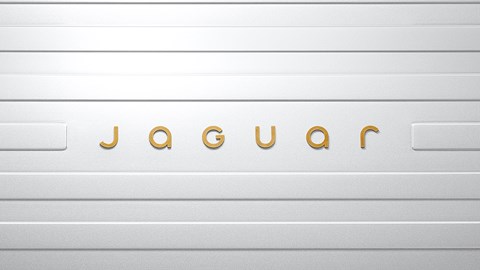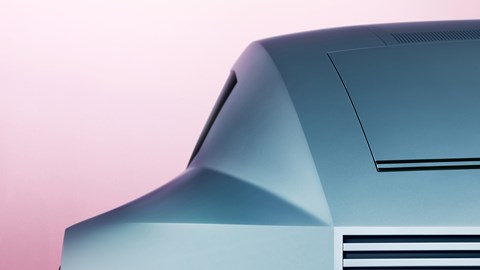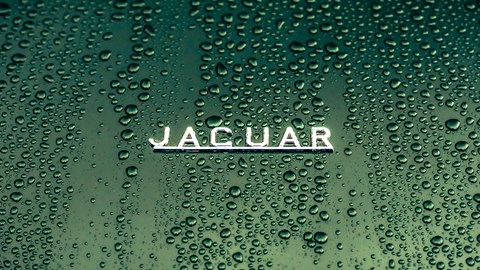► Inside Jaguar’s new plan
► We speak to the boss, Rawdon Glover
► What’s next?
Old Jaguar is all but gone. Production of the XE, XF and F-Type ceased in the summer, and the i-Pace and E-Pace go the same way soon, leaving the F-Pace in production into early 2025 as likely the last ever Jaguar with an engine. When it goes, the curtain will fall on a chapter that, by JLR’s own admission, didn’t work.
‘The last 25 years of playing the volume premium sector – it’s not been commercially successful. If anything, it actually started to tarnish the brand,’ Jaguar managing director Rawdon Glover tells CAR, matter-of-factly.

New Jaguar is beyond ambitious. From scratch, JLR will build an all-electric luxury brand selling cars at six-figure prices. The powertrain is all-new. (Not for new Jaguar an easier solution like Aston’s Lucid deal.) The brand positioning is all-new. The client experience, we’re told, will be all-new. The plan was agreed in 2021, and the first car, a four-door GT, goes on sale in 2026 – so in just five years, Jaguar will go from selling mainstream SUVs and saloons through conventional dealerships to being a more affordable electric Bentley, interacting with a discerning client base via boutique spaces and a luxury digital experience. And new Jaguar will succeed where others have either struggled (Lucid) or delayed (Aston).
Where to start… Jaguar undoubtedly has history, but its brand equity evidently didn’t help it sell cars to people spending £50k, let alone those spending £120k or more. If there’s hope in the notion that the luxury EV market beneath Rolls-Royce but above the volume players is relatively immature, the i-Pace – albeit at a lower price point – is a sobering reminder that going early is no guarantee of success, nor that a good car will sell. And while new Jaguar is free to describe itself as luxury until it’s blue in the face, ultimately, whether or not it gets to enjoy the trappings of being regarded as such is beyond its control.

There may be some comfort in the fact that the moonshot doesn’t include beating everything out there on technology. The ballpark numbers for the 2026 GT and the JEA platform on which it’ll sit are not remarkable, despite so-called ‘gen 2.0 technology’: ‘more power than any previous Jaguar’ and a 430-mile range. The Mercedes EQS claims 481 miles; Lucid’s Air, more than 500. Glover: ‘People won’t be buying our GT because it’s electric. The reason you’re going to buy it is because it’s a stunning piece of vehicle design inside and out and you want it.’
Reasons to be optimistic are few – there are three or four, perhaps – but chief creative officer Gerry McGovern’s track record is undoubtedly one of them. His transformation of Land Rover has been extraordinary. He has sparked remarkable success through his flair and determination as a visionary, a brand custodian, and a designer; in the age-old battle of design versus engineering and cost, McGovern rarely retreats.

Arriving back at Land Rover in 2004, the work that followed – two Evoques, two generations of Range Rover and Range Rover Sport, and the Defender – has gilded Land Rover’s cars with a level of desirability that has transformed its pricing power. You can no longer buy a Range Rover for less than £100,000. Average transactional values are £78,430 for the Defender 110, £134,395 for the Range Rover, and £187,249 for the Range Rover SV. There may be no better-qualified person on the planet for the task Jaguar faces than McGovern.
Numbers two and three? Glover says JLR is in this for the long haul, with a plan that stretches into the next decade. And while the push upmarket brings with it nowhere to hide when it comes to the owner experience, it will at least put new Jaguar out of reach of China – for now.
‘The decision of whether to retire the Jaguar brand and start over or continue with it pre-dates me, but I can only assume it was on the table and we rejected it,’ says Glover. ‘Whether you’re Polestar or any of the Chinese brands, they can’t create provenance. They can’t create history. Why would we throw all that away? We’ll be selling significantly fewer cars than the likes of Polestar, and we’re not going to do the full line-up, from A1 right through to A8. We tried that and it didn’t work. Everything I see about the way in which things are changing validates our decision to go to the elevated price point. You don’t want to be up against China with the car as a commodity.’

And the third? The passion of Jaguar’s people. Glover adores Jaguar. UK brand director Santino Pietrosanti adores Jaguar so much he has a Jaguar tattoo. If passion begets success, new Jaguar will be just fine.